Photos: Justin Chung
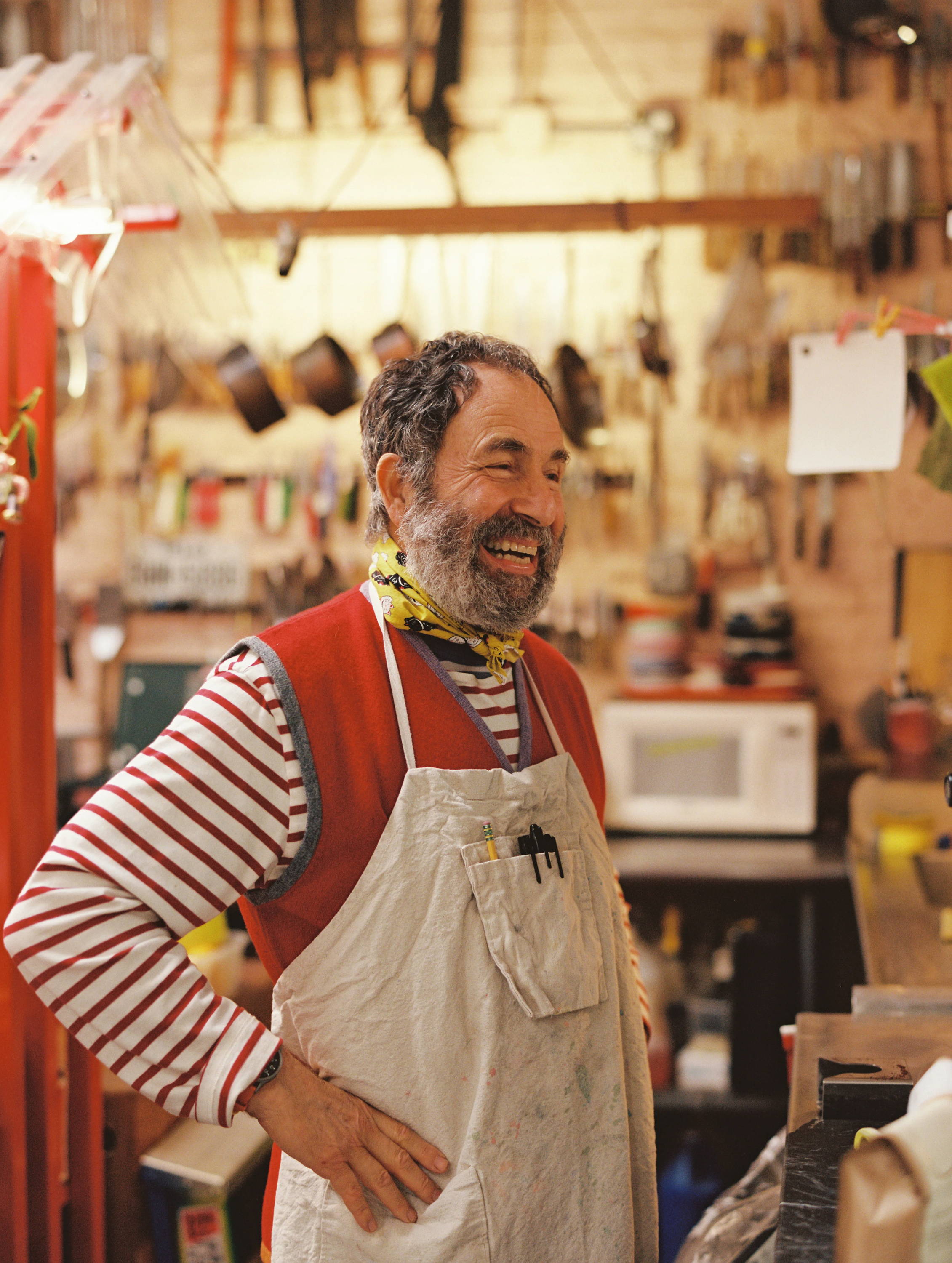
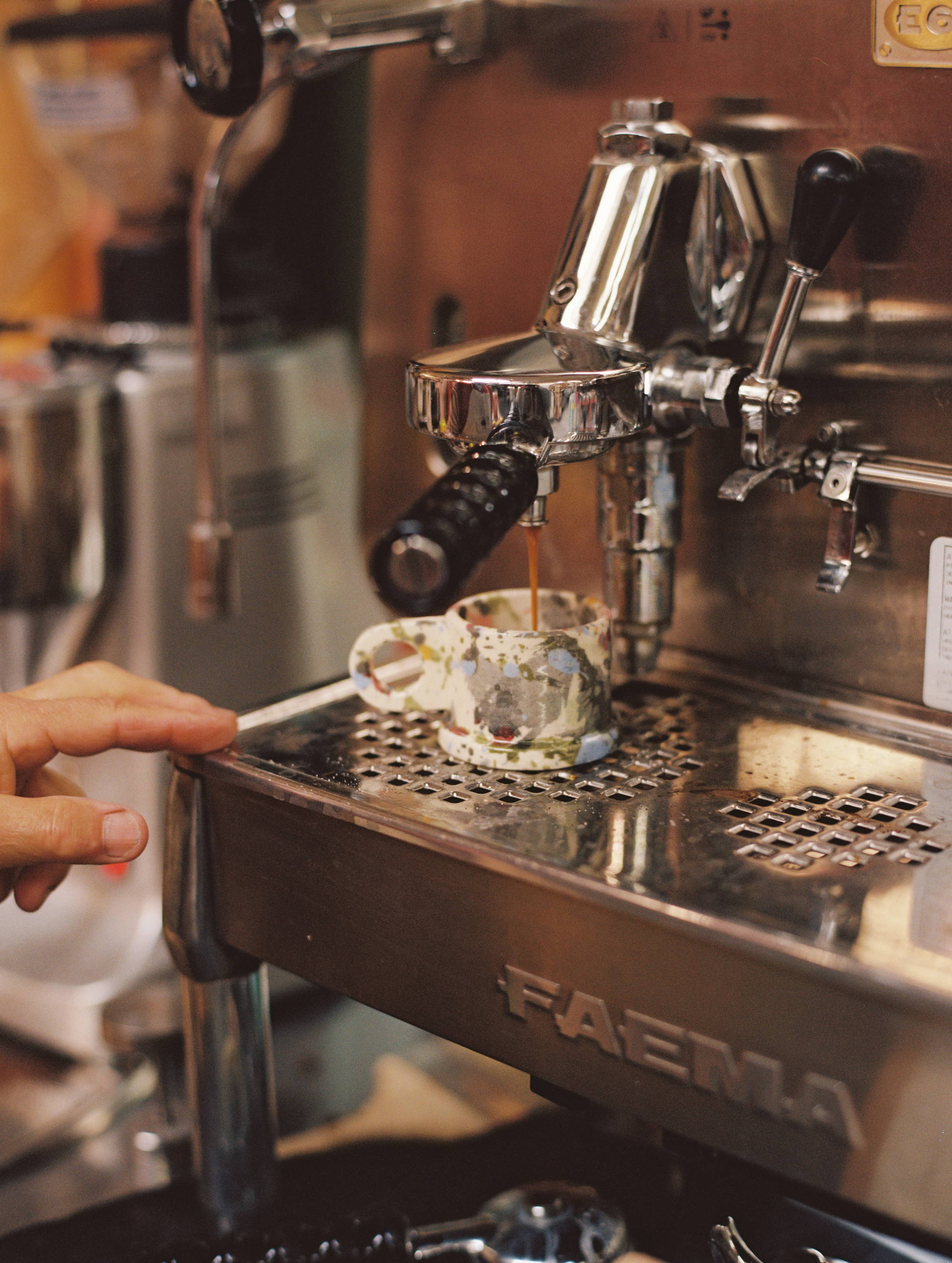
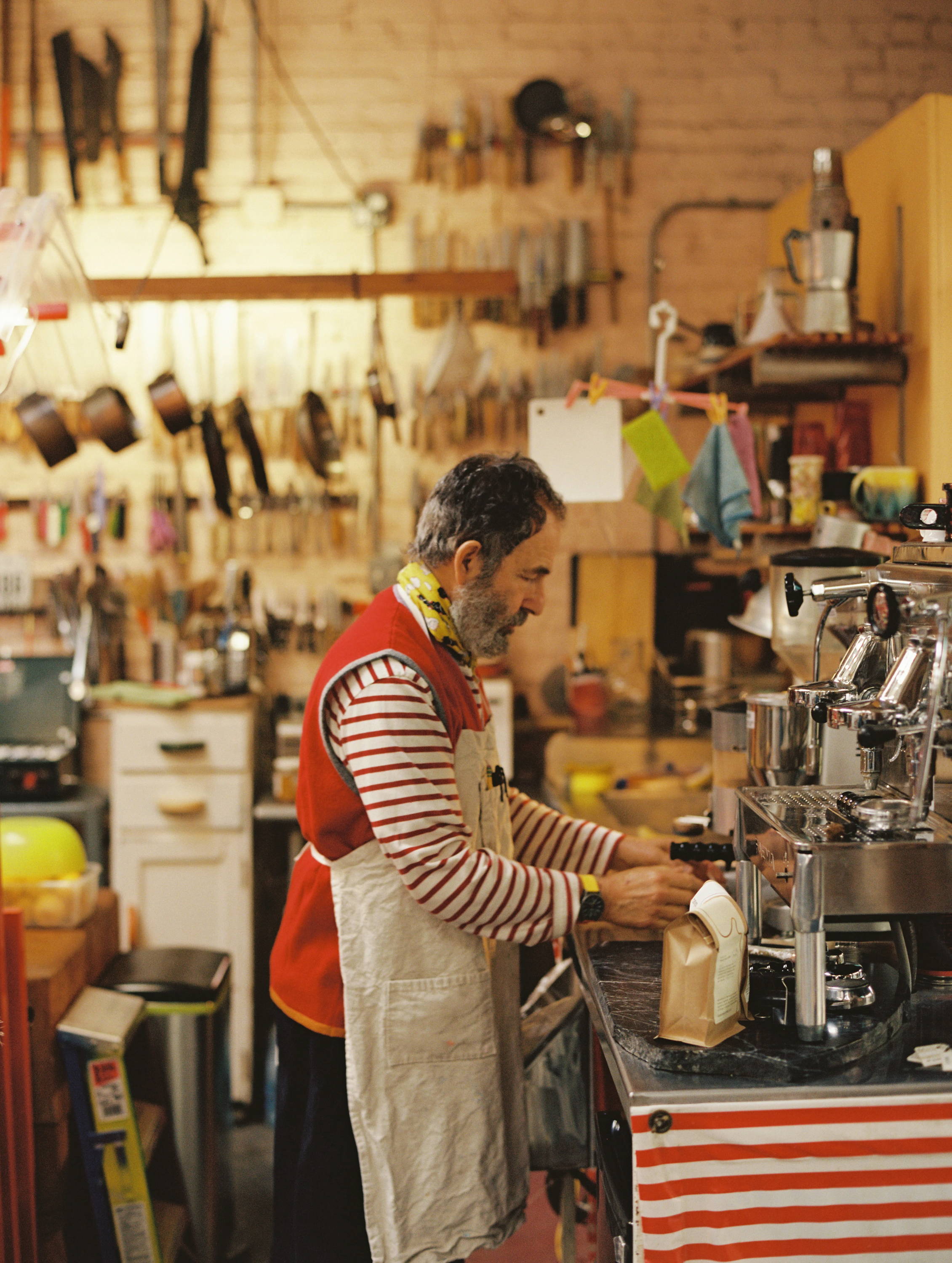
Peter Shire: Okay, the morning routine. We always want to pretend we don't have one, that we're so spontaneous and loose, like ZORBA THE GREEK! But we're all pretty predictable, and aside from the usual ablutions, like taking a shower — I take one in the morning and in the evening.
C: Twice a day?
P: Yeah, twice a day. I got into that habit in Baton Rouge, Louisiana, because it was so humid. That's another story, right?
In the morning, I come into the studio. I get out of the car, I unlock the door, I go to the espresso machine and get it going. Usually, it takes a couple shots... the first cup is usually kind of nasty. Is that the case with you?
C: Yeah, the machine needs to be warmed up!
P: It needs to be.
C: Espresso machines feel happier when they’re humming.
P: My ongoing “things”—the objects I use daily—I think of them like a leather coat. You leave it in the closet for a year, and it's stiff when you put it on, but when you wear it a couple of times it fits so well. They are things that need to be cured, so to speak, and those are the kinds of things that are always of interest to me.
So, once the espresso machine is warmed up, I like to make coffee for everyone in the studio. It hurts my feelings when they bring a cup from somewhere else! I reckon it is a way for me to keep a connection with everybody… the rim of the wheel isn't anything without the spokes and the hub, and vice versa. The whole thing—the studio, our team—is a unit, and making coffee for everyone is a way for me to bond. It’s something I can do, for them.
C: In the same way that the ritual is giving to people, it’s also as if you’re giving to the machines and things, giving them purpose and life.
P: Yes.
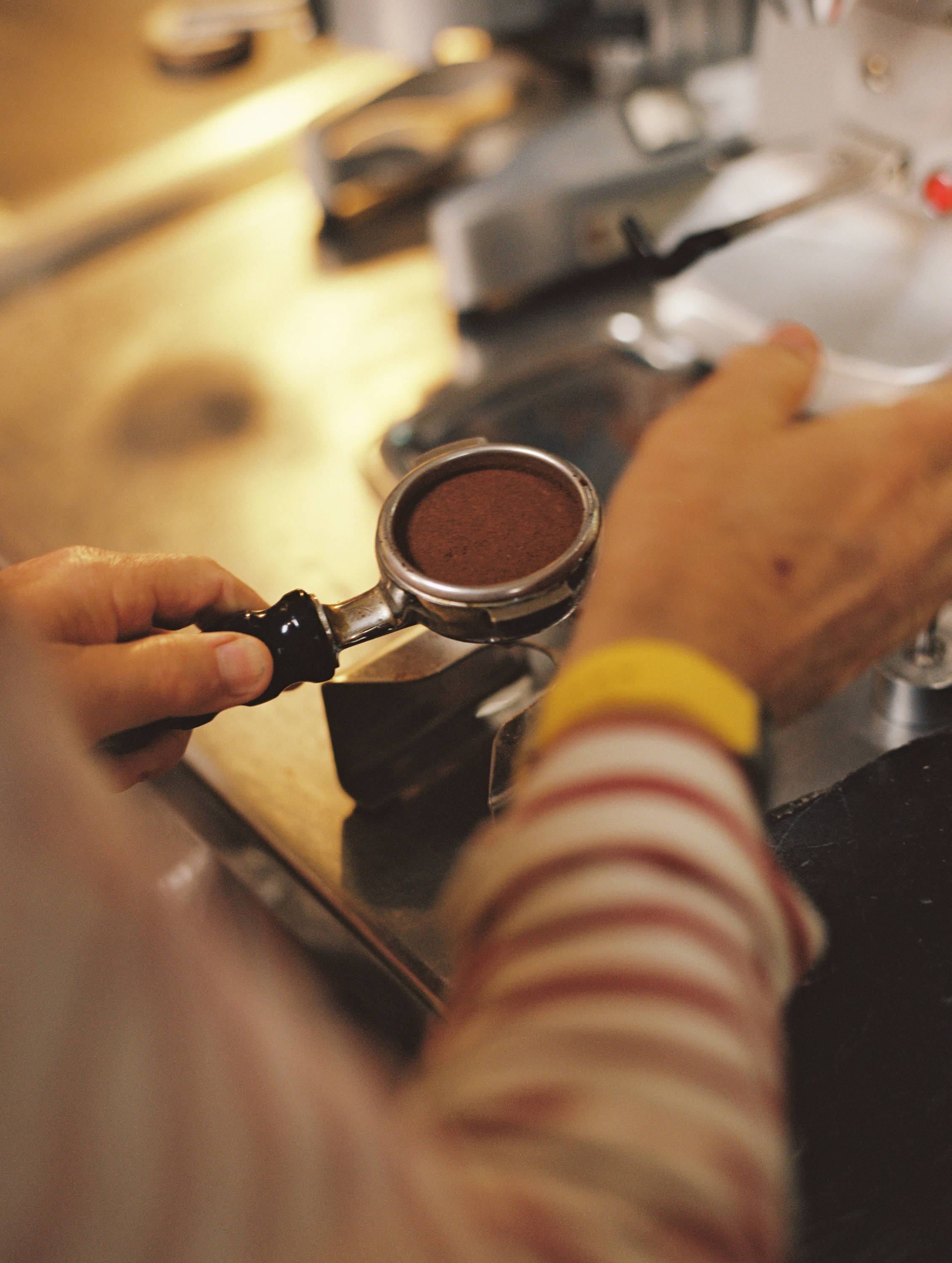
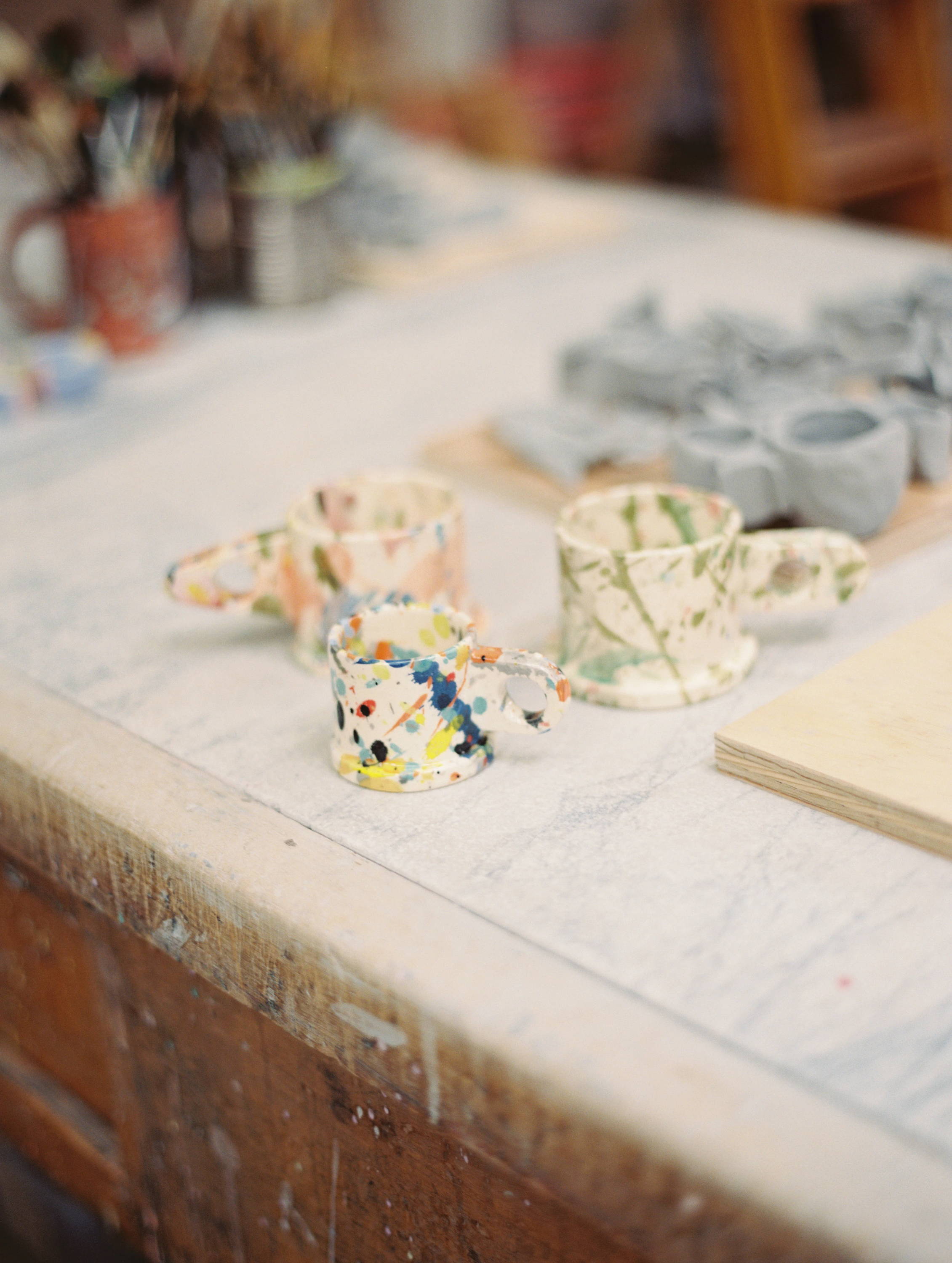
P: Years ago, I didn't drink coffee, I was a teetotal—I didn't drink alcohol and I didn't do coffee. I really didn't even drink tea, even though I made thousands of teapots. I used to joke that I put Coca-Cola in them.
That was before I went to Italy. While I’m in Milan (during Memphis) I go out and I have a decaf. I went into one of the coffee bars and said, "Can I have a decaf espresso?" and the girl yells at the barista in this disdainful Italian—I mean, nobody can be angry or disdainful like Italians—and she yells “One without!” in Italian. In other words: “You aren't a coffee drinker, you’re coffee drinker junior.” I started having regular espresso then.
Now, every time I make espresso, I have this feeling, this moment, of nostalgia. The smell brings me back to those days, going into the coffee bar at 6 in the morning before going to the glass factory, the glass furnace, to work.
When I came back to California, we started trying to make our own espresso with a little foam machine. Of course, it didn’t work. It's just a way of kind of pushing water through the coffee. We’d grind it and pack it, and we’d blow the O-rings out of these things! I was buying O-rings by the dozen from my industrial supplier and burning through them.
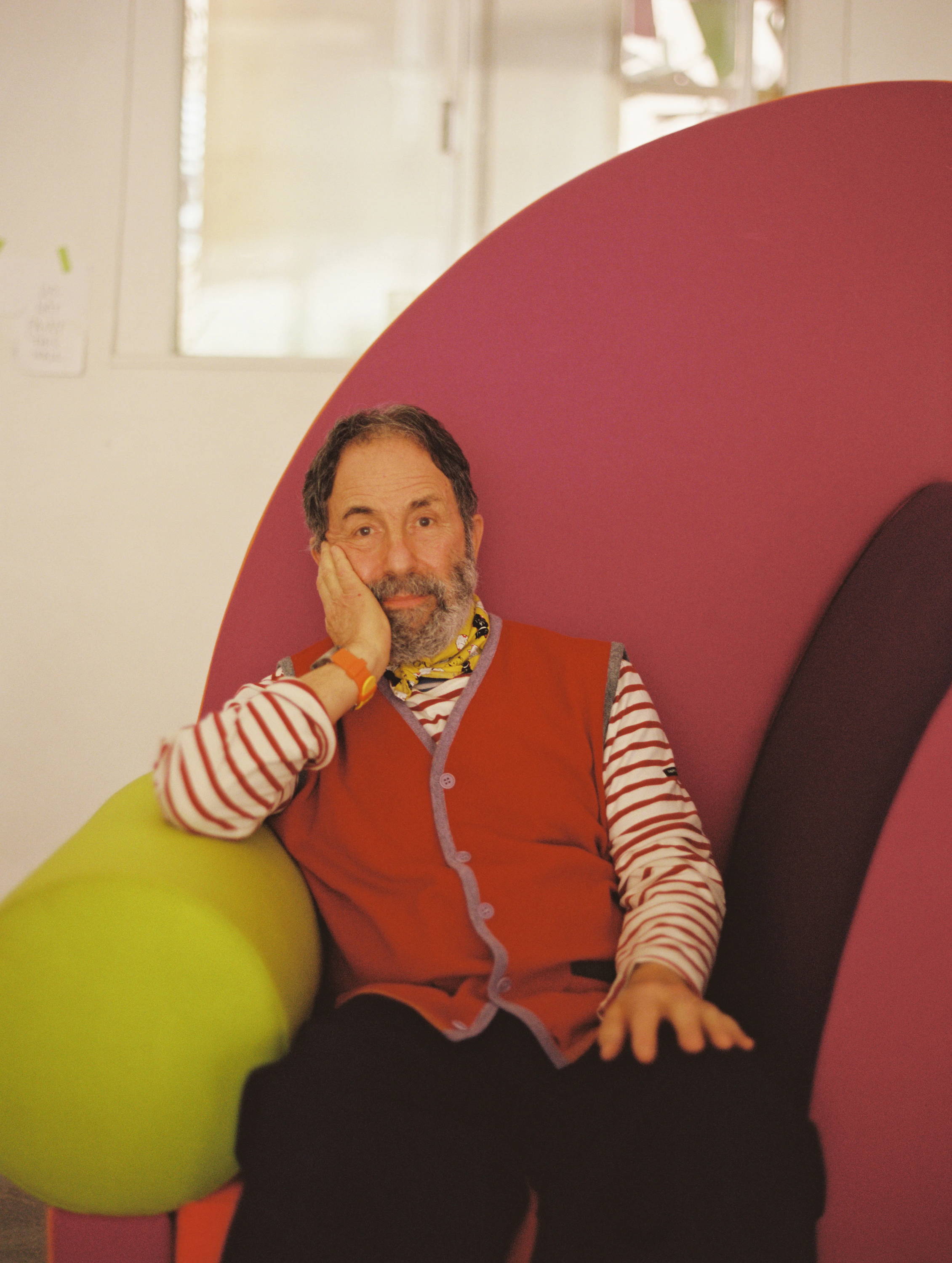
And then one day, ALDO CIBIC, a wonderful guy, (one of Peter’s partners and fellow travelers with the Memphis Group) shows up with his then-girlfriend, now-wife, and I say, "You want an espresso?” He says, “Yeah.” I pull them both shots, and she remarks, "Oh, this is nice.” And Aldo, very quietly and subtly, doesn’t drink it and puts his cup on the sink. I knew I was missing something, then.
So I went to my friend who had a beatnik coffee shop, called The Onyx. He had two machines, and he let me take one. When I show up he says “Machine’s in the hallway. They’ve used it as an ashtray, but you can take it and use it, if you fix it.”
The machine was a Cimbali M28, by Faema. So I went through the piping, cleaned it, rebuilt it. I did a full tear down of the machine. It was an interesting education. My arrangement with the shop owner was that he'd bring me a machine if it went down, and I’d fix it and use it till he wanted to swap again.
In Italy they say there are 32 steps in making a good espresso, 11 of them are in the coffee bar.
C: There's more to it than just pulling a shot.
P: Yeah, more than. I got a machine that's completely manual, because of my ideas about hand, touch, and transfer of power. It was a very popular machine in Ravenna and in a really chic coffee house is in Milan. It’s the manual E-61 JUBILE BY FAEMA. And that’s the machine I have today.
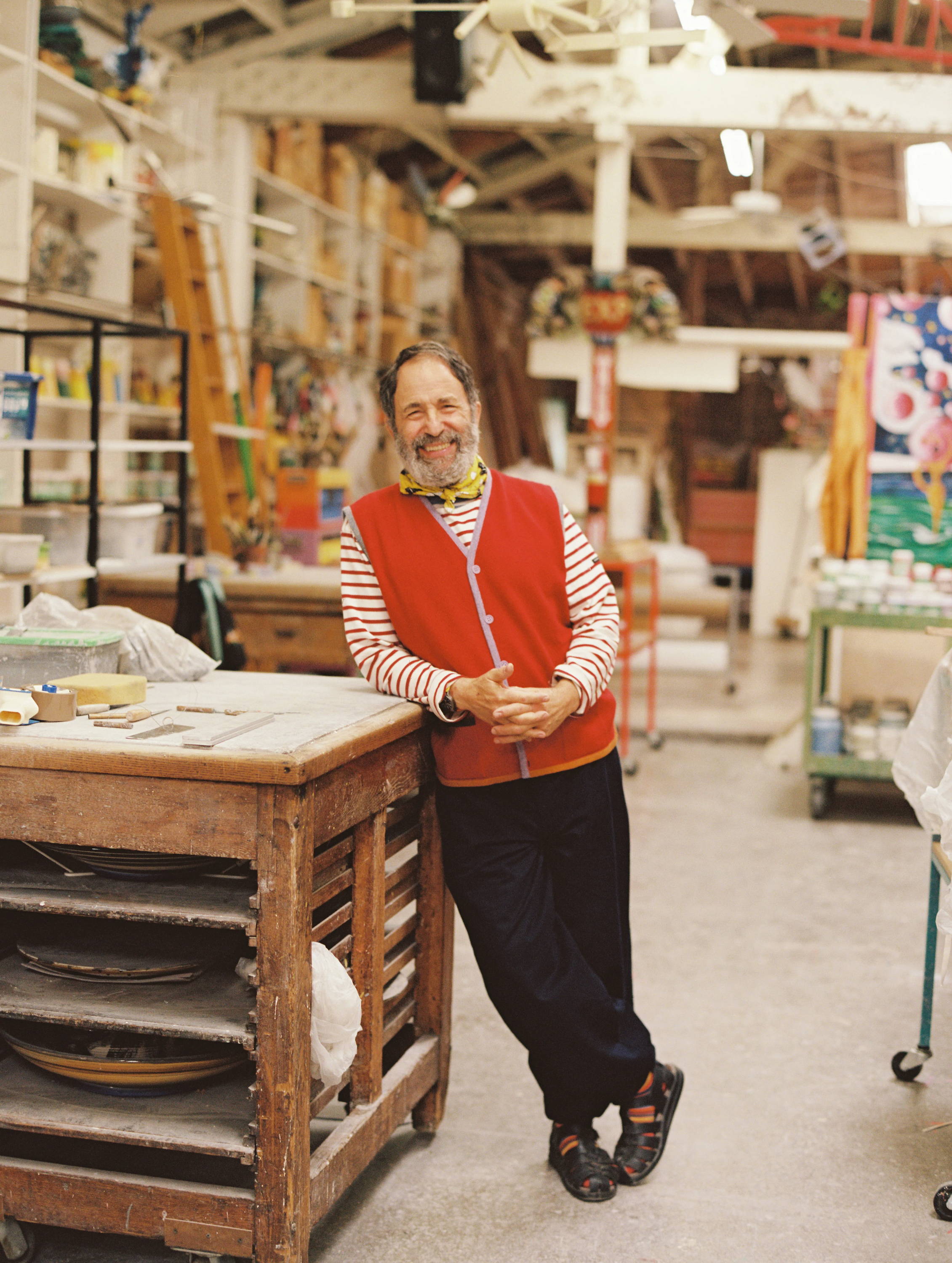
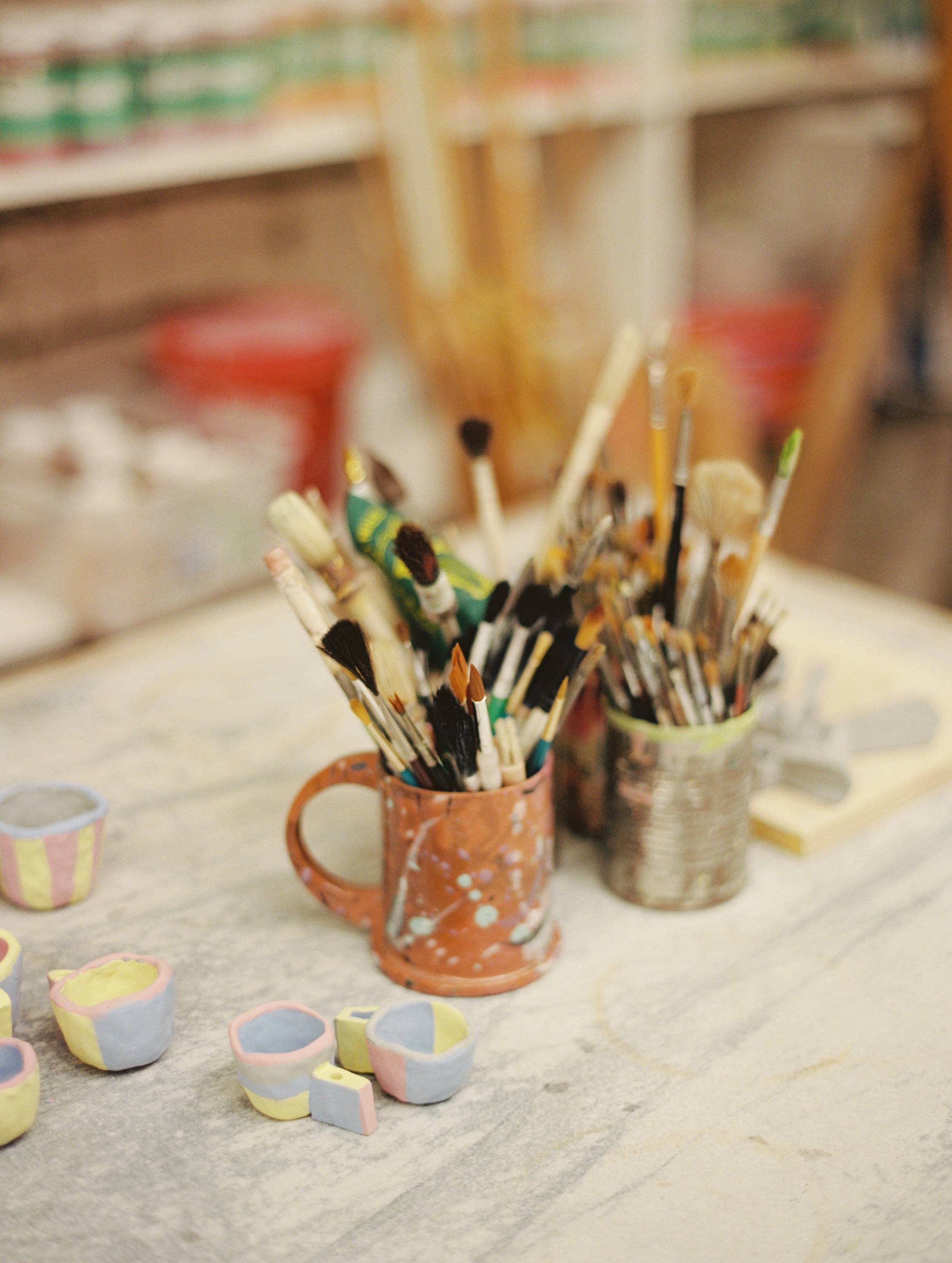
P: In terms of soundbites—sure. Yes. But it’s such a back and forth history. A lot of it has to do with the way colors are produced, and with what people can stand. There are two aspects: one is production, one is maintenance, or living with. Pigments like white and creme are comprised of dirt. They’re easy to produce, so they’re everywhere.
The thing that astounds me is the way people dress [in muted colors]. Maybe it’s a part of Puritanism. But Italians, who are predominately Catholic, do the same. It may have originated with the way dyes are produced. But it also has to do with how we live and interact with the color of things. I haven’t evolved enough in my thinking to understand.
But that’s what MEMPHIS was.
I feel one of the contributions I made maybe had something to do with California and color. Coming out of the 70s and into the 80s, a whole group of people that I knew were doing what now is called POSTMODERNISM, which is about the gathering and amalgamation of existing information as a way of making something new.
The thing that I did—of course, I made all kinds of ideas and reactions, but, basically—I wanted everything to be bright. I just had to do it. I was trying to make all these colors vibrate and come together, and that’s what I brought to these Italian guys and gals in Memphis. Their stuff is tamer than mine, and I laugh because when Memphis was over, they went back to their natural good taste!
Traditionally, paintings are mostly neutral, with a few accents. I was reversing that for some reason; I was making everything high majors, with neutrals being the accents.
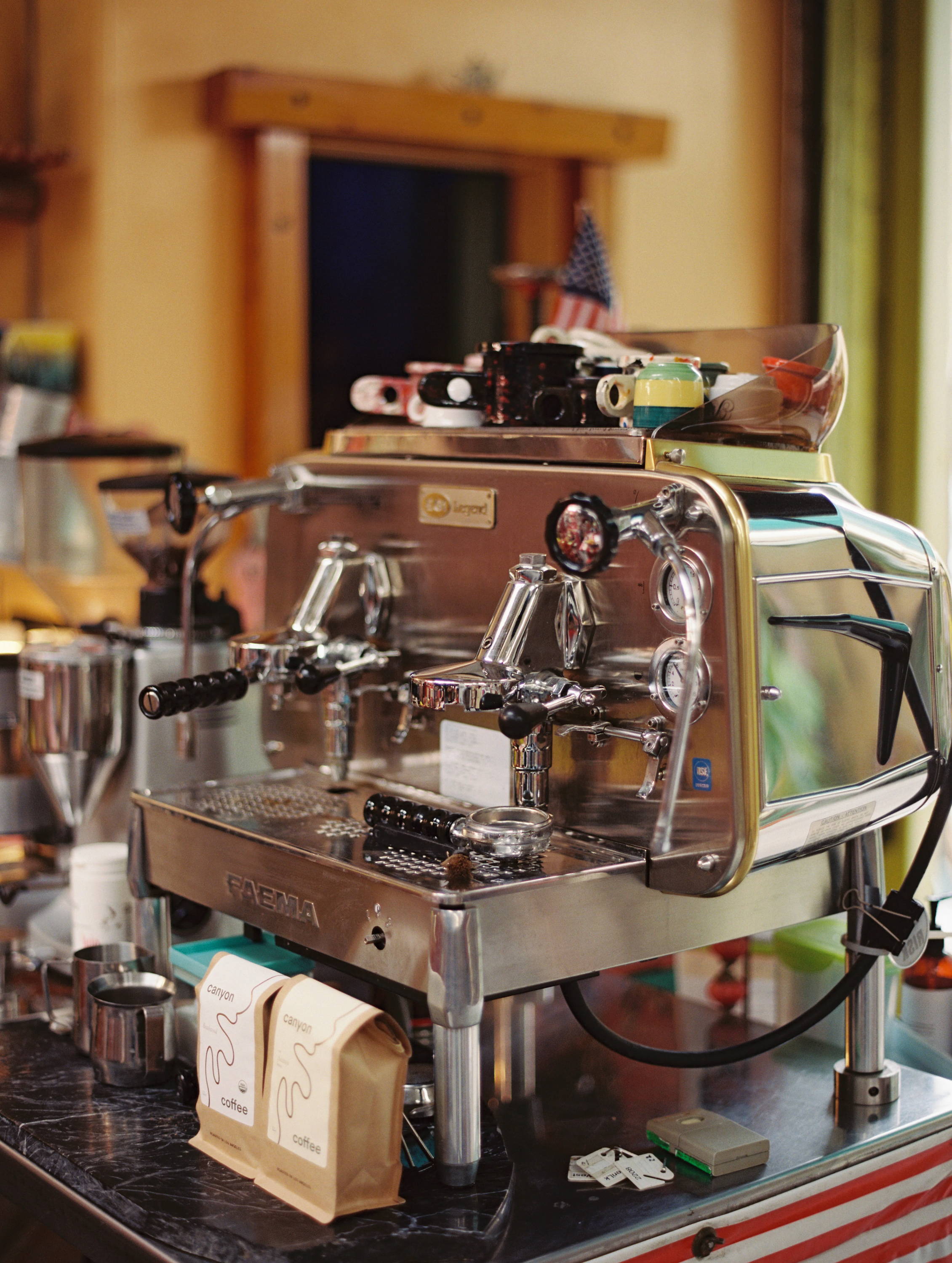
P: Would people be happier with color? A lot people don’t want to stand out. The neutral color thing has a lot to do with our ability to live with it. It’s a comfort thing, whatever your preference is. George Bernard Shaw’s way of saying it was something to the effect of, “He who desires a lifetime of complete happiness desires to enjoy the taste of wine by keeping it your mouth indefinitely to savor the taste.”
Most people can’t stand the high color. It doesn’t mean that neutral or understated colors or design can’t be beautiful.
I remember this particular department store in Sapporo. There was an attic, and it had all these used kimonos. The striking thing is that there weren’t any bright colors. There were the most unusual colors. Purple beiges, beige purples. Beige with a spot of purple. Blue grey, green grey, dove grey. Hundreds and hundreds of nuanced colors, and they were all so beautiful. It wasn’t like shopping at Old Navy!
The point is, the question isn’t, “Should people have color in their life,” as my idea of their perfect happiness. What they should have—should being a difficult word—is an idea of proportion and aesthetics that are really beautiful and that light things up.
And it isn’t for their perfect happiness, it’s for mine because I have to look at them! (laughs)
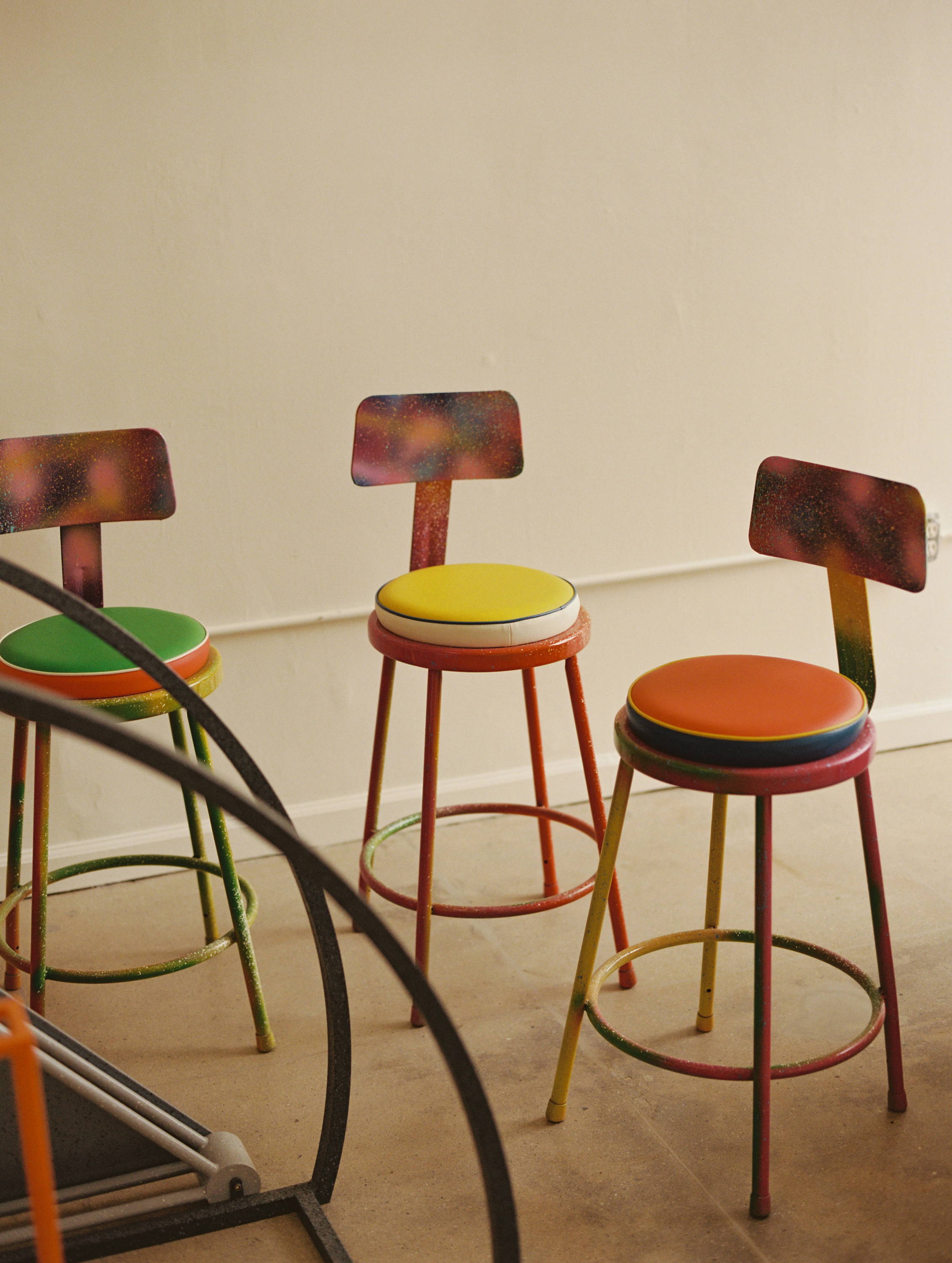
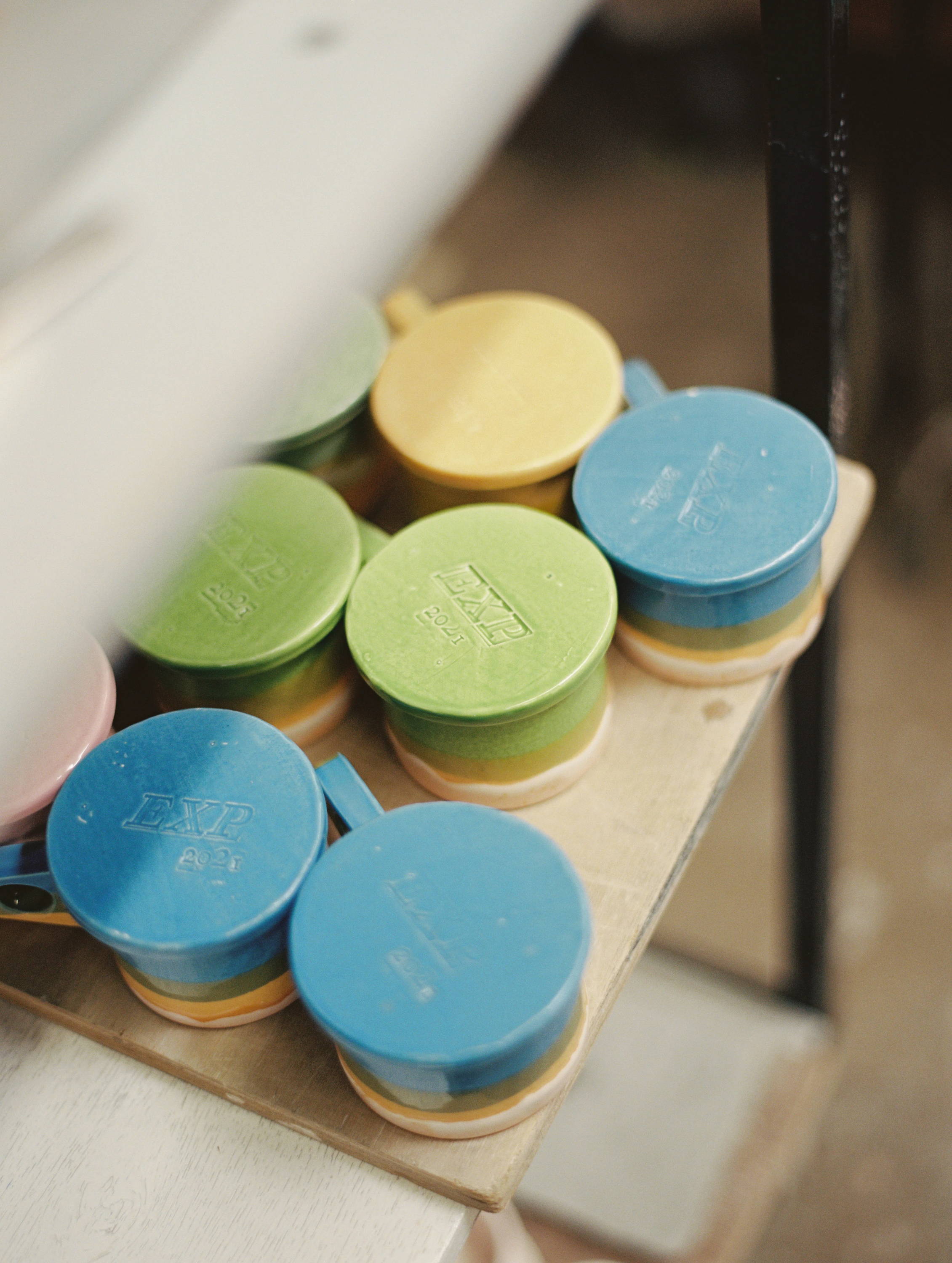
P: Always hoped. Probably had a lot to do with being part of a certain era—I was very aware of all the… aspects. I did go to school here in Westlake Park (now MacArthur Park) at Chouinard, which later, through a series of events, became Cal Arts. But at that time it was an urban, soulful art school of a different model than CalArts. As a child, art was clearly where most of my skills lay. You’ve gotta see a house from all angles. There’s an aspect to cooking rice, where you don’t want to take the lid off… Art was something I had to keep close.
I didn’t tell everyone, “I’m going to be an artist!” I was a big fan of Mose Allison, a jazz pianist. He had a song called “IT DIDN’T TURN OUT THAT WAY.” Sometimes you don’t want to declare these things. In part not to let the pressure off, and partly not to be subject to ridicule. In other words… simply by talking about wanting to be something, you create a different reality where you’re not necessarily pursuing it.
Here’s a story about one of the places that [pursuing art] came from. One summer I worked with the county of LA. I was talking with one of the guys in the hallway and he kept talking about this girl. “Look at that gal over there, she looks great.” And then he turned on his heel and said to me, “I’m gonna go talk to her. If I keep talking about it, I’m not going to do it.” That lesson stuck with me. The difference between saying it and doing it. The saying it can divert you from doing it.
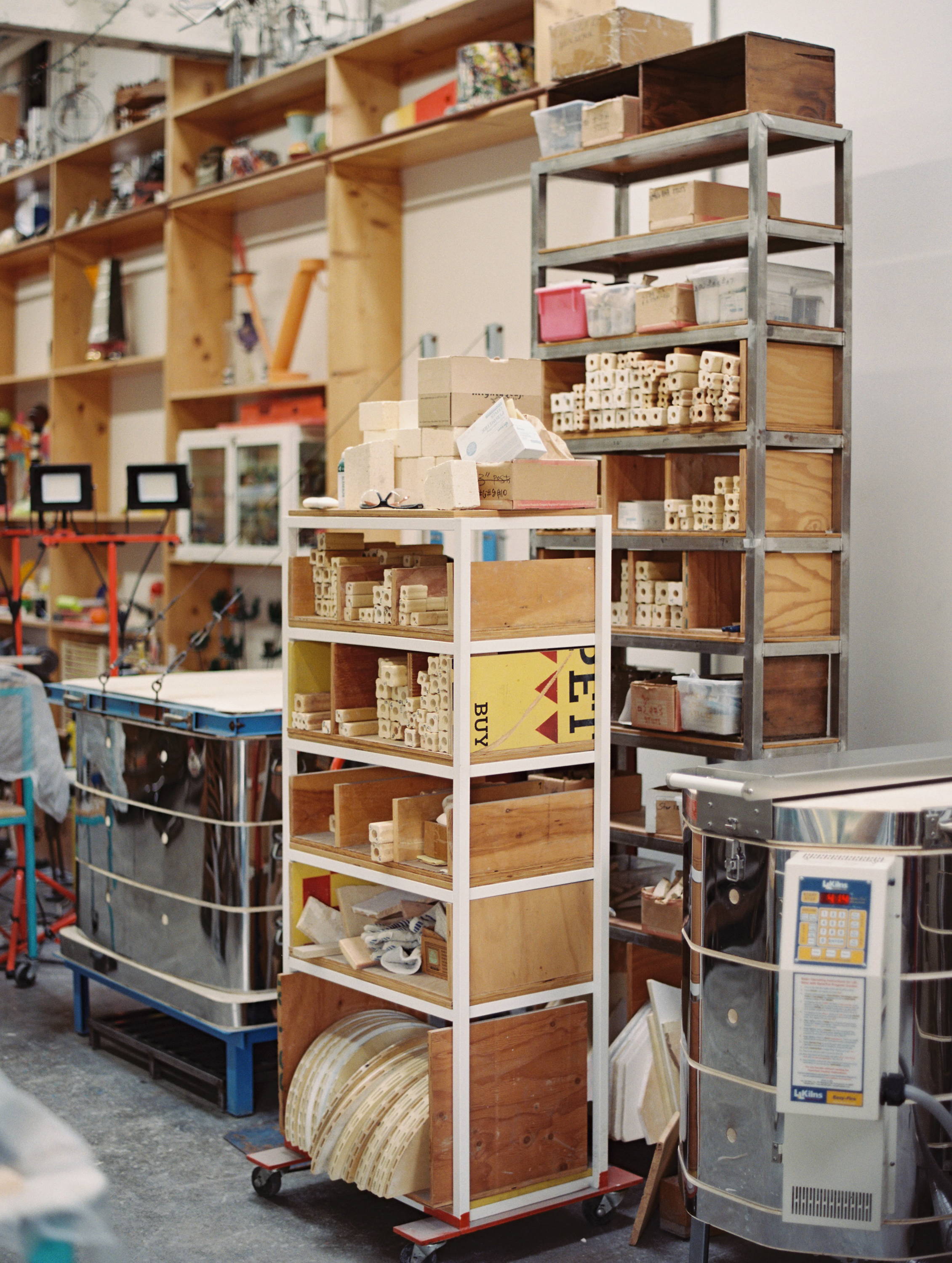
P: Memphis is two things. It’s a mythology, and it’s a “brand,” as they call it now.
What does that mean, a brand? It means the name itself carries meaning, rather than the meaning carrying the name. It was something that came out of a moment.
Everybody says, “Artists are the harbingers, or weathervanes, of cultural change and they’re 20 or 30 years ahead.” But it’s actually the reverse: we’re actually 20 years behind—40 years ahead of everyone else.
These things, these moments like Memphis, are really generated by technology. What constitutes technology has changed over time. in the Middle Ages, it was moving from hunter-gatherer to agrarian society.
In the Renaissance, the great technology was banking, trade, and imports. Traveling, in a sense. And so forth: these technological shifts generate major changes. Memphis hit a moment where technology had changed and was changing.
For me, the touchstone was changing from strictly industrial technology to digital or computer technology. IBM was getting going in the 50s. In the 80s, PCs were starting to become more commonplace.
And ideas around how a computer could influence production, the making of objects, were starting to gain traction. So there was this fantastic cross of industrialism, handmade culture, and computer attitudes.
Many people had said “You should meet this guy, Sottsass.” Then he showed up here in California. We went to lunch, we were getting along. I was working up my courage to say, “What do you think about my coming to Italy?” when he turns to me and says, “When will you be in Italy?”
I said, “How about August?” He said “No don’t come then, everyone will be on vacation.”
I said, “Okay, I’ll come in September. Should I try to learn Italian?”
He said, “Don’t bother, anyone you’ll want to talk with already speaks English.”
So I went, we hung out, we did all kinds of stuff. I was supposed to work with STUDIO ALCHIMIA, the predecessor of Memphis, so I went to this ceramics factory… a few months later BARBARA [RADICE] called me and said “We’ve left Alchimia, we’re going to start a new group. Will you come with us?” I said, “Sure.” And the rest followed.
There’s a lot to say about it. And it’s a very important part of my now-history. Something that at that time I was simply doing and going through and was fun, and it meant a lot. I knew it meant a lot, but I had no idea.
And other things have meant a lot too, but Memphis ultimately changed the world and became the high-end signifier of an era; an important design movement, if you will. And I was part of it, God bless my little heart!
When you’re talking about having a defining moment, or a career high.. there’s a story of the rock-n-roll singers, the ones who have one or two hits. When they’re asked, “Don’t you get tired of singing that song?” they say, “Thank God for that song.”
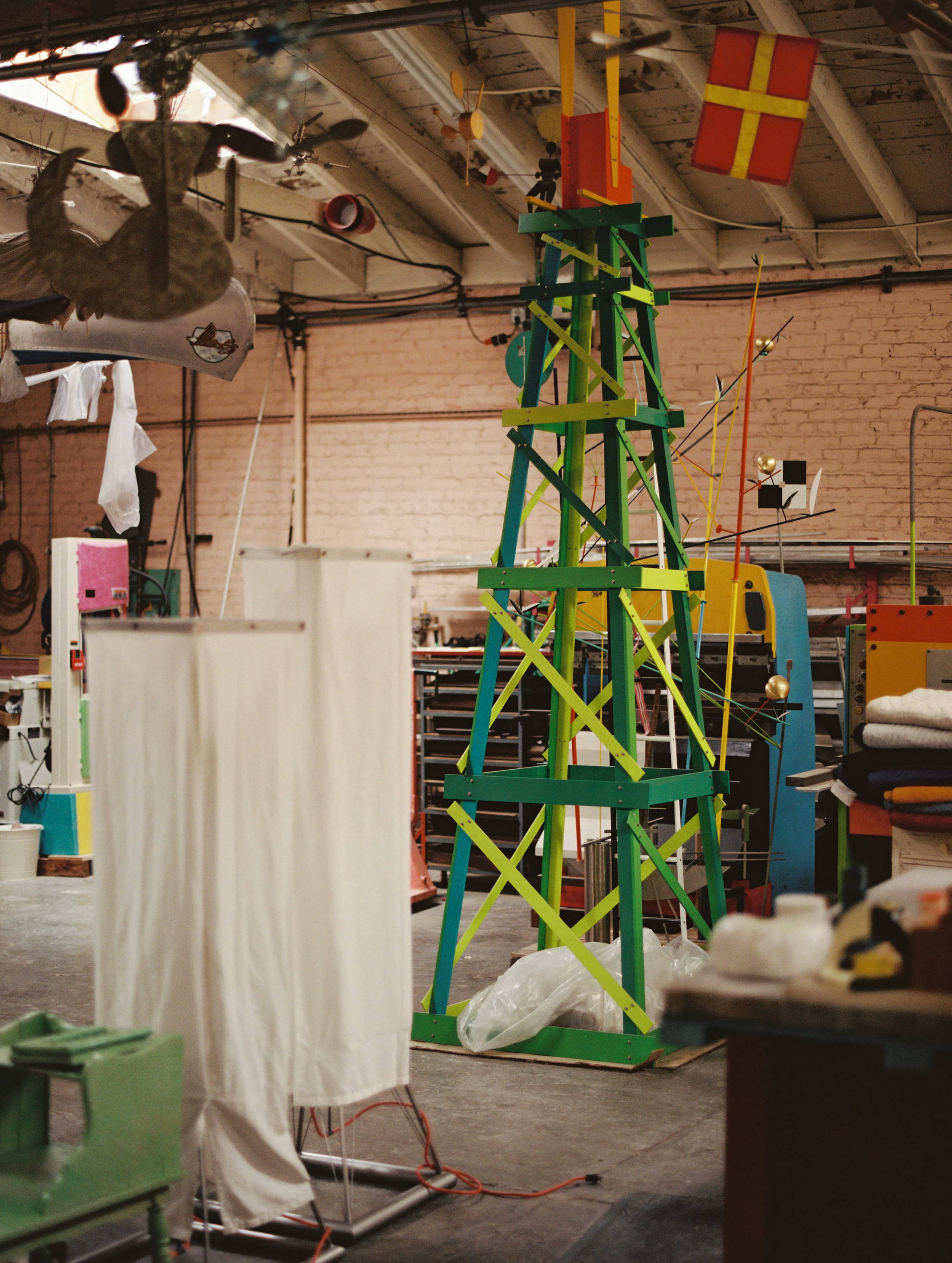
JACQUES TATI
FRANÇOIS TRUFFAUT (Peter's favorite French director)
JEAN-LUC GODARD: BREATHLESS, in particular
P: “The French directors are interesting to me because they want to deal with this nihilist existentialism.”
JUZO ITAMI: Ramen Man, Tampopo
JOHN SAYLES: Lone Star, Sunshine State
P: "THE WRECK OF THE MARY DEARE is one I can always watch. That was a movie I picked up The Ramona, an old theater in Echo Park."
BLACK ORPHEUS by Marcel Camus
Another formative film for Peter when he was young. "It was based on the Greek myth of Orpheus, and it was the first time the world heard [Antonio Carlos] Jobim."
"What’s fascinating about [Fellini] is he started as a political cartoonist. LA STRADA was his first big hit. He had a great moment. His comment was that a filmmaker, an artist, only gets 10 good years. Ten years of popularity, but also of really hitting it, knocking it out. Yet his most popular film, as I understand it, is Amarcord, which was made well after his initial ten year mark!
THE HORSE’S MOUTH. Based on the novel by Joyce Cary, which I find to be one of the best portraits of an artist. Cary was considered a follower or an evolution of James Joyce.

Peter Shire is a ceramicist based out ofLos Angeles.
Peter Shire is an American ceramic artist and designer known for his unique, pastel colored mugs, teapots, and furniture.
All photos by @justinchung